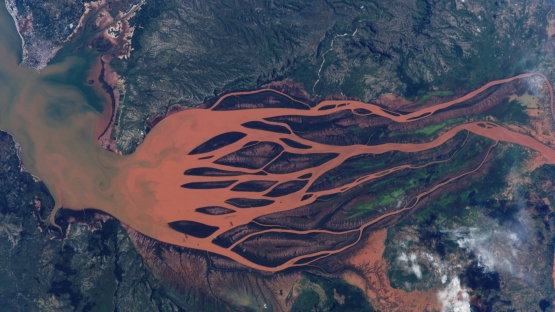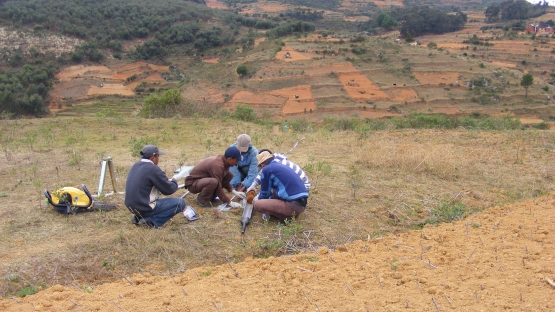In Madagascar, where farming has moved toward modern intensive agricultural practices in recent decades, a study has demonstrated that the country’s farmers would be much better off if they returned to the traditional terrace farming of their ancestors. Using isotopic techniques to study erosion patterns of the island country’s mountainous regions, where more than 30 percent of the agricultural area is already degraded, the Joint FAO/IAEA Division found that terracing systems could reduce soil erosion by 40 percent.
Astronauts once reported that Madagascar looked as if it were bleeding to death. Today, looking at a satellite view of the country makes it easy to see what they meant. The image shows reddish rivers and reservoirs – not filled with blood but with the country’s red ferralitic soil that is eroding down the island’s steep slopes, leaving agricultural land barren and adding sediment and its polluting nutrients of nitrogen, phosphorus and potassium to water systems.
Due to deforestation and improper farming practices, Madagascar, one of the world’s poorest countries, loses more topsoil per hectare each year than just about any other country in the world. The soil itself is not particularly fertile and now it has to deal also with the impacts of climate change, such as drought, floods and unpredictable rainfall that further break down the soil structure and makes it more likely to erode.
In order to help Madagascar’s farmers with conservation practices, scientists at the Institut National des Sciences et Techniques Nucléaires (INSTN-Madagascar) in the capital, Antananarivo, worked with Joint FAO/IAEA Division experts to address the problem and identify the country’s most erosion-prone areas. The Joint FAO/ IAEA Division assists countries in quantifying soil erosion rates and assessing the effectiveness of their soil conservation practices. In the case of Madagascar, this called for using isotopic techniques to investigate and compare soil erosion rates in terraced and non-terraced agricultural fields.






